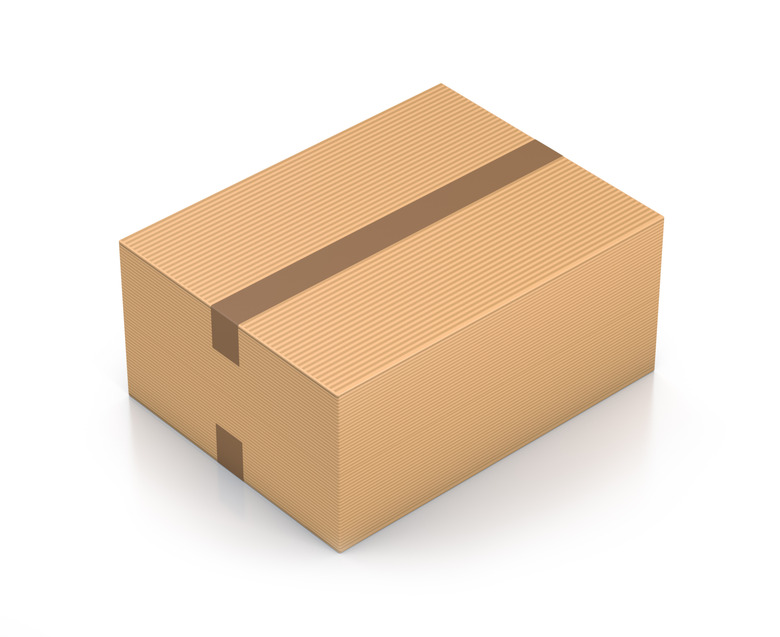How To Solve Volume Math Problems
Volume lets you know how much a container holds. Differently shaped containers require you to compute the volume differently. When working with cubes and rectangles, before you can figure out the volume, you first need to measure the length of the sides. When dealing with cones and spheres, find the radius first. Remember that the radius extends halfway across the center of the cone or sphere at the widest point. When you've calculated the volume, state it in cubic terms. For example, a rectangular solid might have a volume of eight cubic inches.
Volume of a Pyramid
Volume of a Pyramid
To figure out the volume of a pyramid, measure the distance from the base of the pyramid to the tip. This measurement needs to go straight through the center of the pyramid. You also need to figure out the area of the base. To do this, multiply the length of the pyramid's base by the pyramid's width. Once you get the area, multiply the base by the height, and then divide by three. The formula reads as volume = (b x h)/3. B stands for base and h stands for height. For example, you have a four-inch high pyramid that has a base whose length is two inches and whose width is three inches. Figure out the area of the base by multiplying 2 x 3 together, for a value of 6. Now, multiply 6 x 4, since the pyramid extends four inches tall. Divide 24 by three to get the volume of a pyramid. In this case, you get an answer of eight cubic inches.
Volume of a Cone
Volume of a Cone
The volume of a cone requires you to find the radius and the height, which is also known as the altitude. The formula is volume = (pi x r^2 x h)/3. Pi stands for pi, which is 3.142. R stands for radius, and you have to square it by multiplying the radius by itself. H stands for height. Once you get the height and you square the radius, multiply pi by the squared radius and then multiply that by the height and then divide the result by three. Find the height of the cone by measuring the shortest line segment between the apex, or tip, of the cone and the base. Pretend you have a cone with a two-inch radius and a three-inch height. After you square the radius by calculating 2 x 2, fill in the remaining numbers to get the volume. For example, for the formula of a cone, the equation is volume = (3.142 x 4 x 3)/3. Multiply the numbers in parentheses first to get a value of 37.704. Then, divide that answer by three to get a value of 12.568 cubic inches.
Volume of a Sphere
Volume of a Sphere
Calculating the volume of a sphere requires you to figure out the radius. Once you get the radius, multiply it by itself three times or use the cubed function on a scientific calculator. Then, plug that number into the equation volume = (4 x pi x r^3)/3. Use 3.142 for pi and enter the total of the radius cubed for r^3. Take a sphere with a two-inch radius. Once you cube the radius by taking 2 x 2 x 2, plug in the remaining numbers to get the volume. For example, for the formula of a sphere, the equation is volume = (4 x 3.142 x 8)/3. Multiply the numbers in parentheses first for a value of 100.54. Then, divide that answer by three for a value of 33.51 cubic inches.
Volume of a Rectangle
Volume of a Rectangle
Rectangles use the formula volume = l x w x h. Figure out the length, width and height of the rectangle and plug in those values for l, w and h in the formula. For example, a rectangle with a length of 2 inches, width of 1 inch and height of 3 inches is volume = 2 x 1 x 3. This gives you an answer with a total of 6 cubic inches.
Volume of a Cube
Volume of a Cube
If you want to find the volume of a cube, figure out the length of one side of the cube and multiply it by itself three times. The formula for the volume of a cube works out to A^3. For example, if one side of the cube has a value of 5 cubic inches, then plug the number 5 into the equation so the expression is 5^3. In this case, 5^3 works out to a value of 125 cubic inches, or put another way, 5^3 = 125.
Cite This Article
MLA
Martin, Avery. "How To Solve Volume Math Problems" sciencing.com, https://www.sciencing.com/solve-volume-math-problems-7851600/. 24 April 2017.
APA
Martin, Avery. (2017, April 24). How To Solve Volume Math Problems. sciencing.com. Retrieved from https://www.sciencing.com/solve-volume-math-problems-7851600/
Chicago
Martin, Avery. How To Solve Volume Math Problems last modified August 30, 2022. https://www.sciencing.com/solve-volume-math-problems-7851600/
